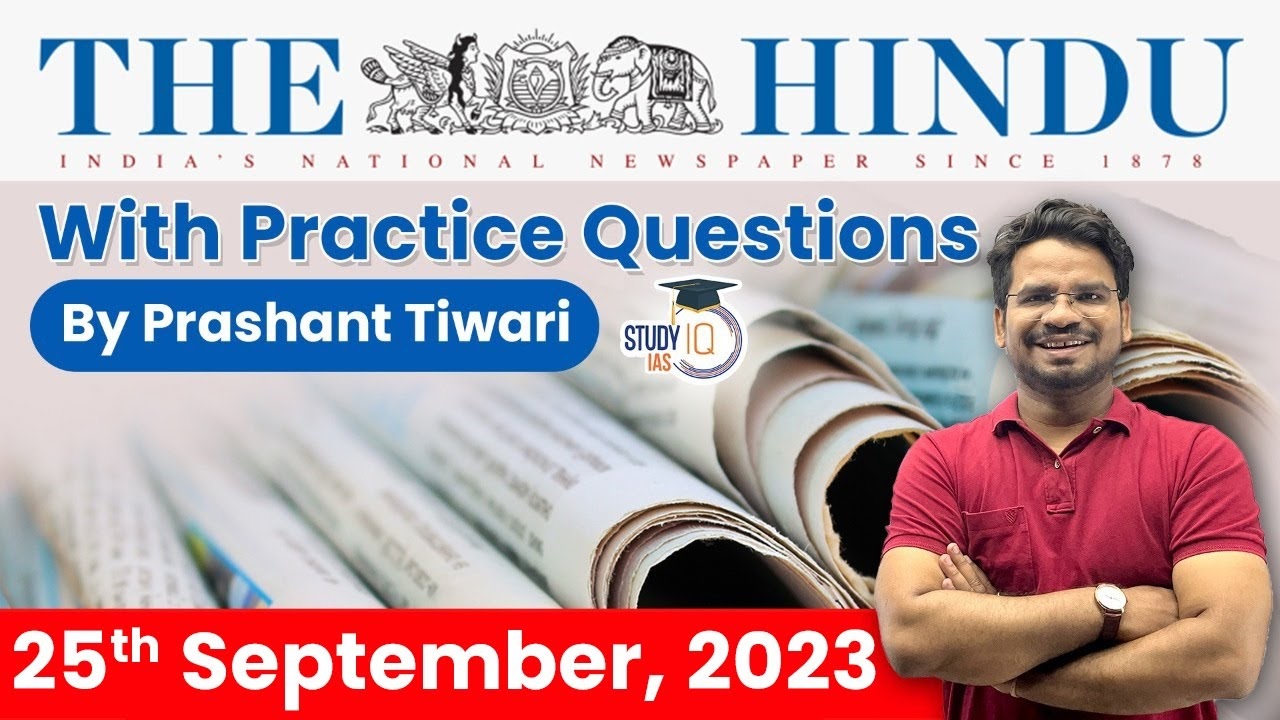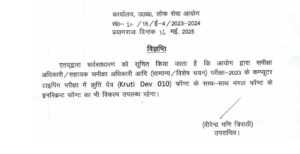The Hindu Newspaper Analysis for UPSC

The Hindu Newspaper Analysis 23 September 2023
- Global rating major Moody’s Investors Service has flagged concerns about security and privacy vulnerabilities in centralised identification systems such as India’s Aadhaar programme. The unique ID system often results in “service denials”, and using biometric technologies in humid conditions is unreliable, it noted.
- The Aadhaar system enables access to public and private services, with verification through fingerprint or iris scans and alternatives such as one-time pass codes (OTPs). However, it “faces hurdles, including the burden of establishing authorization and concerns about biometric reliability”, Moody’s said.
The Hindu Editorial Today
- In a report on “Decentralized finance and digital assets” issued on Saturday, Moody’s acknowledged Aadhaar as “the world’s largest digital ID program” that assigns unique numbers to over 1.2 billion Indian residents.
- Aadhaar is a 12-digit unique identification number issued by the Unique Identification Authority of India (UIDAI) to every individual resident of India.
- It serves as proof of identity, which is linked to the individual’s biometric and demographic information.
- The Aadhaar programme was launched in 2009 by the UIDAI with the goal of providing a unique and verifiable identity for every resident of India.
- It is now mandatory for a number of government services and is also being used by private companies for identification purposes.


- After several organisations of students and teachers raised objections to the option of multiple entry and multiple exit (MEME) in the National Education Policy (NEP), the Parliamentary Standing Committee on Education, headed by BJP MP Vivek Thakur, has advised the Centre to hold discussions with all stakeholders.
- The panel, in a report titled “Implementation of the National Education Policy, 2020 in higher education”, said Indian institutions were likely to face several issues in implementing this system. The report was tabled in both Houses of Parliament during the recently concluded Special Session. The NEP proposes multi-entry and multi-exit options for the students in higher education.
- The panel said while the MEME looked like a flexible system, which was being operated by Western educational institutions effectively, it might not work well in the country.
- Citing high population, it said the estimated intake of students in higher education every year was high.

- In the present parliamentary system of India’s democracy, at both the central and State levels, since the survival of the government is dependent on its enjoying the confidence of the majority of the house (majorities can change mid-term because of splits in parties, defections or even if some Members of Parliament/Members of the Legislative Assemblies from the ruling party refusing to support the government) the government can fall mid-term thus leading to mid-term elections.
- Therefore, the only option would be to either continue with a minority government headed by a Chief Minister/Prime Minister who has lost the confidence of the House or to impose President’s rule for the rest of the term.
- The issue of one nation-one poll has been examined by the Law Commission and some parliamentary committees as well and the conclusion was that it would be exceedingly difficult to implement it without substantial changes to the Constitution.
- The provisions of the Constitution that would need to be amended to switch to an essentially presidential system would be as follows: Part V – The Union – Chapter I – Executive – Articles 52-78 and Chapter III – Legislative Powers of the President; Part VI – The States – Chapter II – The Executive – Articles 153-167 and Chapter IV – Legislative Power of the Governor


- But the boldest outcome, and unanticipated by many, was the announcement of the economic corridor (the “India-Middle East-Europe Economic Corridor”), of a rail-ship route, to transport goods to Europe from India via the United Arab Emirates-Saudi Arabia-Jordan-Israel.
- Such a project will change the geopolitics for the future. The fact that it challenges China’s Belt and Road Initiative is beside the more significant point.
- As a host, India invited nine non-member countries — Bangladesh, Egypt, Mauritius, Netherlands, Nigeria, Oman, Singapore, Spain, and the United Arab Emirates — to the summit.
- Saudi Arabia is willing to end the diplomatic boycott of Israel.

- China has in the past issued stapled visas to Indians from Arunachal Pradesh. Only in July, three wushu players from Arunachal Pradesh, due to take part in the World University Games in Chengdu, were issued stapled visas.
- In this instance, the decision to bar the athletes appears particularly vindictive as visas were not needed to travel for athletes issued digital accreditations.
- New Delhi has correctly made clear that restoring normalcy in relations will not be possible without completing the disengagement process along the Line of Actual Control and restoring peace in border areas. Until Beijing reviews its stance on the border, the current state of affairs, which suits neither India nor China, is likely to endure.

- The exercise of carving electoral constituencies and fixing their boundaries is referred to as delimitation.
- Given their almost festive nature in India, elections are traditionally considered to be the primary site where democracy translates into action. Equally significant is the carving out of the boundaries of electoral constituencies, an issue that has implications for adequate representation of voters’ interests as well as the number of members from each State who find space in the Parliament.
- The Constitution (Forty-Second Amendment) Act, 1976 froze the delimitation of Lok Sabha constituencies as per the Census of 1971, up to the Census which was to be conducted in 2001.
- However, in 2001, the day of reckoning was pushed further to 2026. This was done through an amendment to Article 82 by the Constitution (Eighty-Fourth Amendment) Act.
- While the boundaries of electoral constituencies were redrawn in 2002, there was no change in the number of seats in the Lok Sabha. Only after 2026 will we consider changing the number of seats in the Lok Sabha. Strictly speaking, the relevant numbers as to population (and its distribution) are expected to come from the 2031 Census, which will be the first census after 2026.
- Article 81 of the Constitution says that each State gets seats in the Lok Sabha in proportion to its population. The freeze on delimitation effected in 1976 was to allay the concerns of States which took a lead in population control and which were faced with the prospect of reduction of their number of seats in the Lok Sabha.

- “Five Eyes” refers to an intelligence-sharing alliance of the United States, United Kingdom, Australia, Canada and New Zealand.



 UPPSC RO ARO Exam Date 2025 Out: Typing ...
UPPSC RO ARO Exam Date 2025 Out: Typing ...
 Maharashtra Bill to Curb Urban Naxalism,...
Maharashtra Bill to Curb Urban Naxalism,...
 International Maize and Wheat Improvemen...
International Maize and Wheat Improvemen...





















